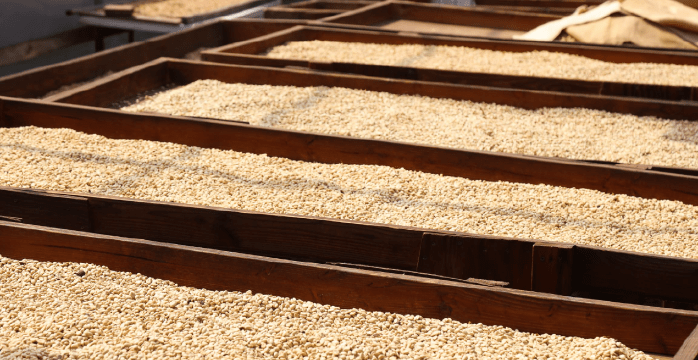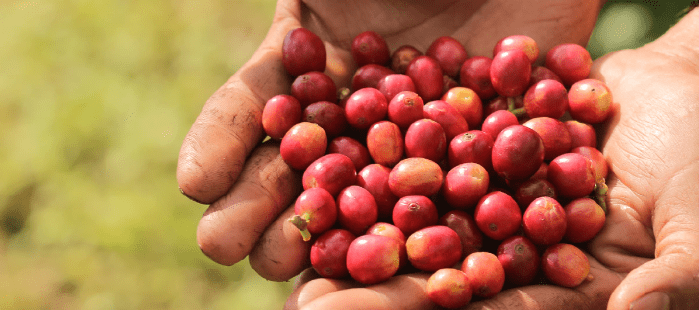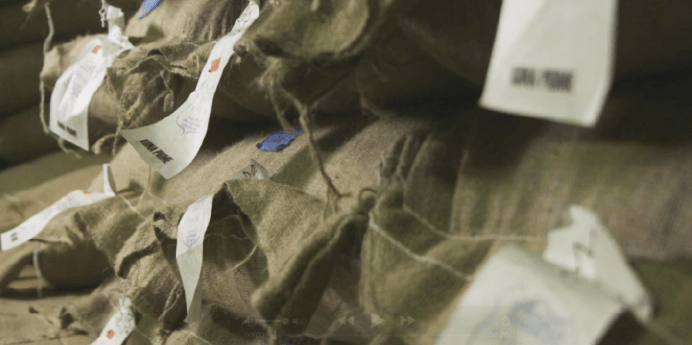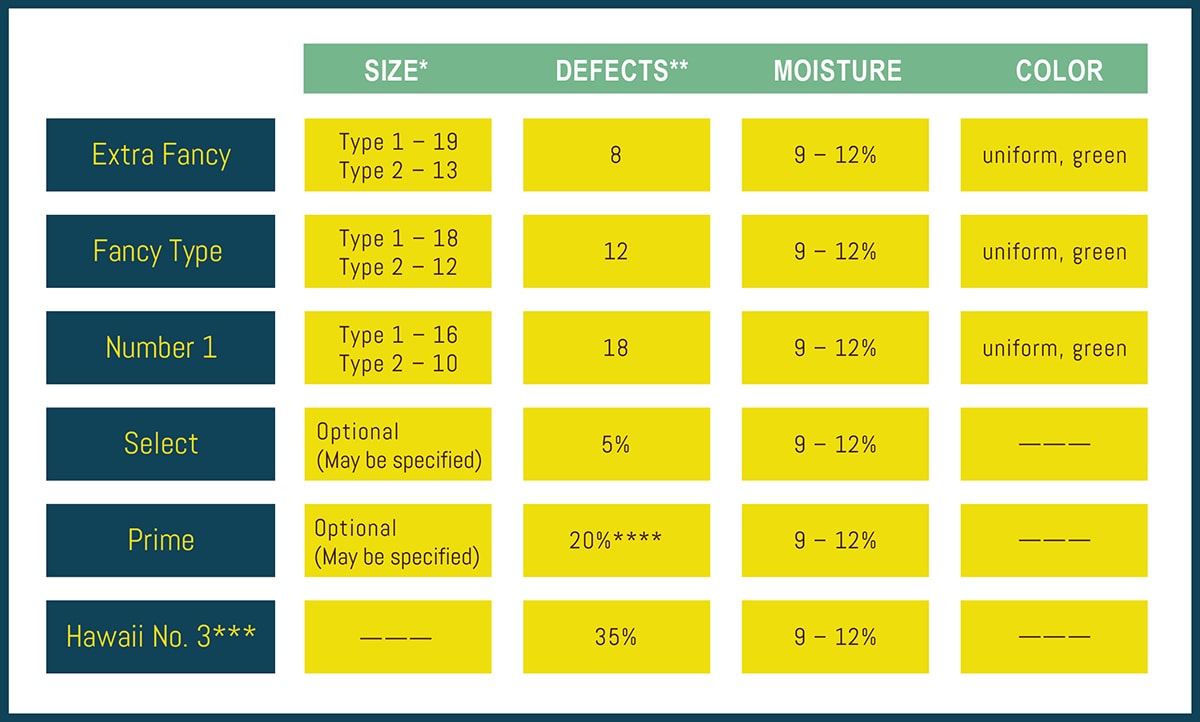From farms to delicious coffee drink
It’s truly amazing when we first saw coffee trees. The fruit look so much like cherries, that’s why we call them coffee cherries. After the cherries are harvested, no matter how they are processed later on, the beans are always sorted to have the bad ones removed.

Dry process: the cherries are spread out in the sun for 2-3 weeks until the moisture content drops to 10-14%, then they are hulled. Having a distinctive aroma is the trait of dry processed beans, but if the hygiene of the environment where they are laid out is no that great, then it’s easy to find twigs or mold beans.
Wet process: the pulp of the fruit is removed form the cherry by machines, then the beans are fermented to remove the mucilage, and washed repeatedly with water. The beans are ready now for the next stage, which is drying. Coffee beans can be dried in the sun or by machine, when the moisture content drops to 10-14%, the beans are ready to be hulled. After the ferment-and-wash process, the coffee tends to look bright and clear with a fruity, acidic taste.

Honey process: The mucilage produced after fermentation is not washed off with water, instead the beans are dried in the sun to reduce the moisture content. Combining dry and wet process, the coffee tend to have stronger aroma than wet processed beans and have a more balanced taste.

After processing, the raw coffee beans are stored at a certain temperature and humidity and taken out for roasting when needed. Experienced coffee roasters remind us when buying coffee beans, keep an eye on their history record of the raw beans, do not rely too much on the roasting dates, to ensure the beans are fresh during each stage.
There’s grading for coffee beans?
According to Hawaii Coffee Association, grading standards for Hawaiian coffee are as below:

Type 1: Refers to coffee cherries that contain two flat beans, these are the beans most commonly sold. Type 2: Also known as peaberry. Peaberries are coffee cherries that contain a single coffee bean rather than two. In the past they are thrown away as defects, but were discovered by accident that they are actually more nutritious and have a richer taste. Only 5% of all coffee beans are peaberries, making them a pretty rare commodity, which leads to the rising popularity in the specialty coffee market. Because of peaberry’s rarity and high quality, the association has come up with grading standards to help customers to recognize the quality of the beans. As you can see form the chart, the rarest and priciest ones are classified as Extra Fancy, followed by Fancy, No.1, Select, and Prime. The colors of the first three raw beans are green and even colored. Extra fancy beans are the largest coffee beans, followed by Fancy, then No1. The number of defects for Extra Fancy and Fancy beans is controlled with the strictest standard, the beans are sorted manually, thus making them the best of the best.